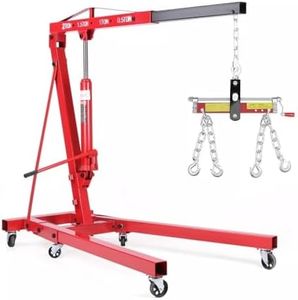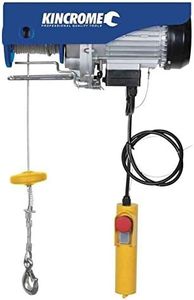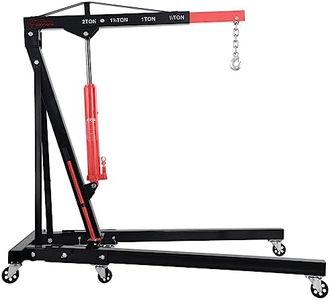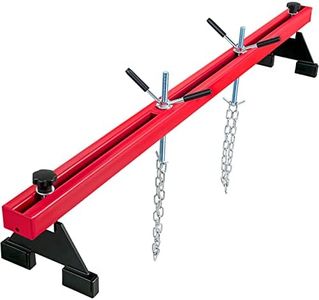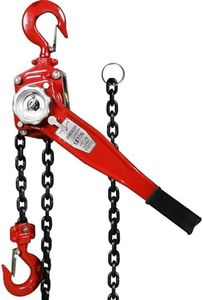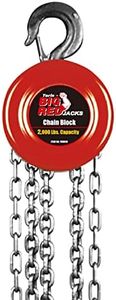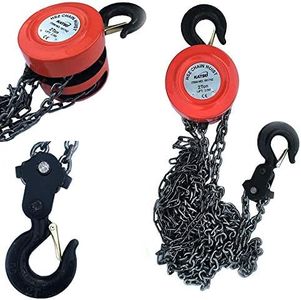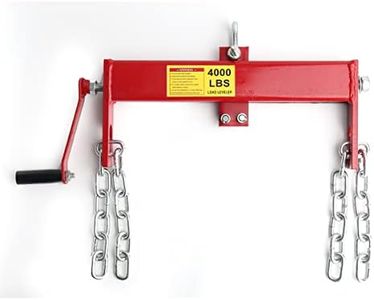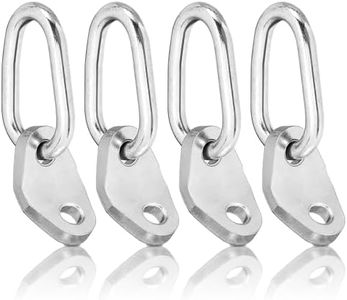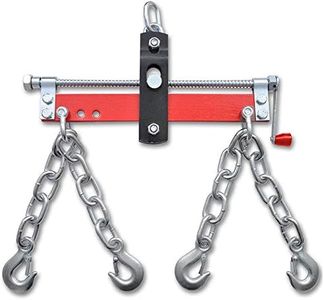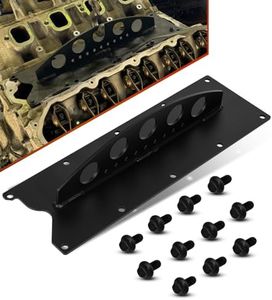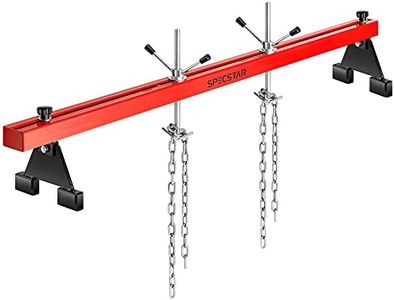We Use CookiesWe use cookies to enhance the security, performance,
functionality and for analytical and promotional activities. By continuing to browse this site you
are agreeing to our privacy policy
10 Best Engine Hoist
From leading brands and best sellers available on the web.Buying Guide for the Best Engine Hoist
When choosing an engine hoist, it's important to match your needs with the features that best suit your work environment and engine sizes you'll be handling. Engine hoists come in various styles and capacities, so knowing where, how often, and what types of engines you'll be lifting can help you narrow down your choices to something both safe and efficient for your garage or workshop.Lifting CapacityLifting capacity tells you the maximum weight an engine hoist can safely lift. This is important because engines vary greatly in weight, and using a hoist beyond its rated capacity is dangerous and could lead to equipment failure or injury. Lifting capacities are typically divided into segments such as 1-ton, 2-ton, or 3-ton. For small four-cylinder engines, a 1-ton hoist might be sufficient; for larger V8s or heavy-duty engines, consider higher capacities. Always check the weight of the engine you need to lift and choose a hoist with a bit of extra capacity for safe operation.
Boom Reach and HeightBoom reach and height refer to how far the hoist arm extends and how high it can lift an engine. This matters because different vehicles have varied engine bay layouts, and you may need more reach or height to safely remove or install an engine. Shorter reaches are good for compact vehicles and tight spaces, while longer reaches are necessary for trucks or vehicles with wide engine compartments. Consider the kind of vehicles you’ll primarily be working on when looking at these specs.
Hoist Type (Folding, Fixed, or Telescoping)Engine hoists come in types like folding, fixed, and telescoping. A folding hoist can be collapsed for easy storage, making it ideal for smaller garages or occasional use. Fixed hoists are more robust and suited for permanent setups but take up more space. Telescoping booms allow you to adjust the reach and capacity according to specific tasks. Your choice here depends on your workspace size, how often you’ll use the hoist, and how much space you can dedicate to storing it.
Hydraulic vs. Mechanical OperationMost engine hoists are either hydraulic or mechanical. Hydraulic hoists use fluid pressure, making them easier and smoother to operate with less manual effort. Mechanical hoists, such as those using a hand crank or winch, usually require more physical strength and are generally simpler but slower to use. If you’ll be working alone or want less effort involved, hydraulic is typically the preferred option. Mechanical hoists might suit lighter, infrequent jobs or if you prefer simplicity over convenience.
Mobility and Base DesignMobility refers to how easily you can move the hoist around your workspace. Many engine hoists come with casters or wheels, but the number and quality of wheels can affect how smoothly and safely you can reposition the hoist, especially when carrying a load. The base design—like a wide, stable footprint—also ensures stability during lifting. If you’ll be working on uneven floors or need to move the hoist between jobs, consider models with robust wheels and a stable, wide base for improved safety.
Build Quality and MaterialsBuild quality and materials largely affect the durability and safety of an engine hoist. Hoists made with thick, reinforced steel are generally stronger and last longer than those using thinner or cheaper materials. Pay attention to welds, joints, and hardware quality. If you expect to use the hoist frequently or for heavy engines, investing in a hoist with superior materials and construction will ensure longevity and safety.

